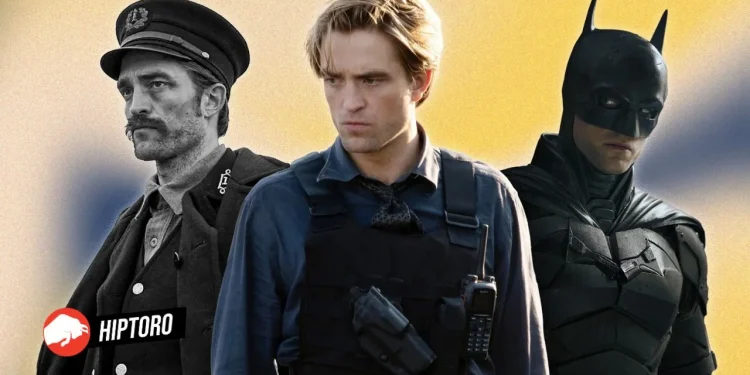Embarking on an exploration of Robert Pattinson’s illustrious acting career offers a fascinating journey through a diverse array of roles that showcase his exceptional range and depth as an actor.
Known initially for his breakout role in the global phenomenon “Twilight,” Pattinson has skillfully navigated his path through the complexities of Hollywood, evolving into a versatile and respected figure in the film industry.
This journey reflects his transformation from a teenage heartthrob to a serious actor dedicated to pushing the boundaries of his craft.
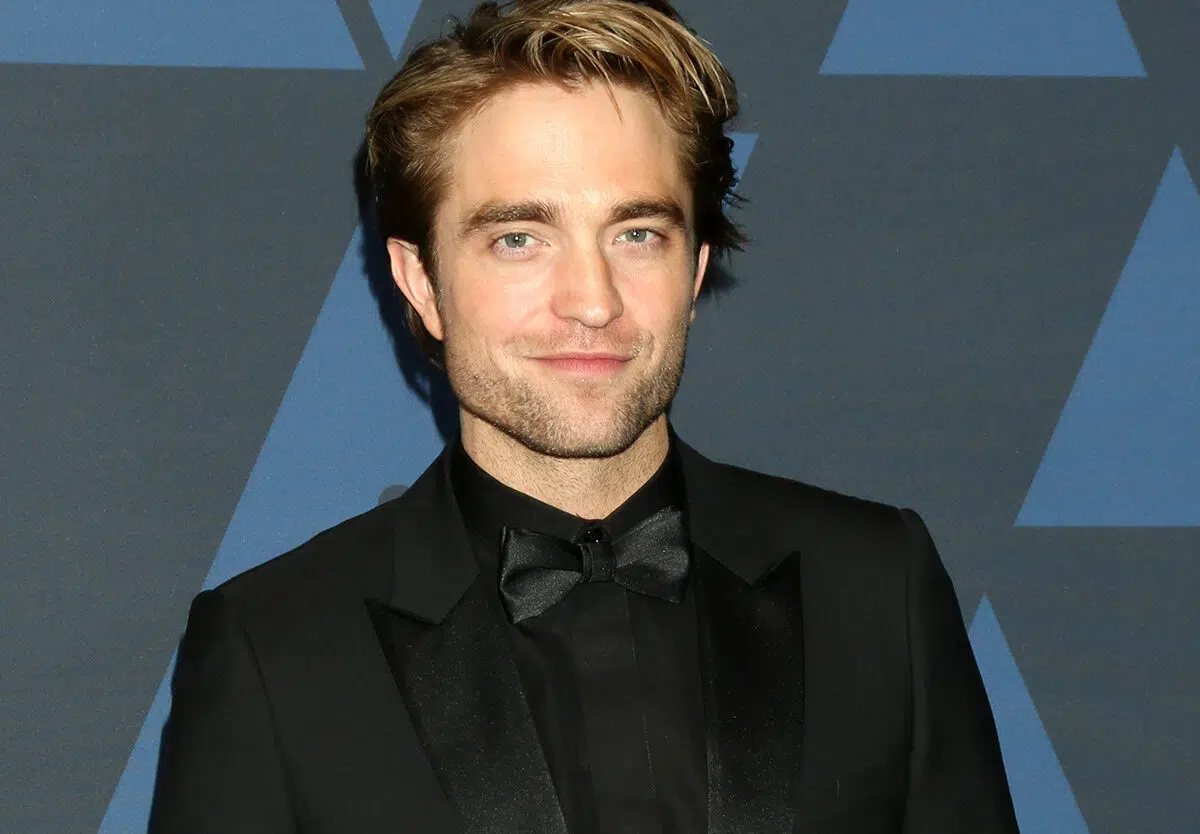
Through a detailed examination of his most notable films, including “Good Time,” “The Lighthouse,” “Tenet,” “The Batman,” and more, we gain insight into Pattinson’s ability to immerse himself in a variety of characters, from brooding vampires to enigmatic drifters and beyond. Each role serves as a testament to his commitment to character-driven storytelling and his willingness to explore the darker, more complex aspects of the human condition.
This comprehensive overview not only celebrates Pattinson’s achievements on the screen but also delves into his impact on popular culture, his role as a fashion icon, and his contributions beyond acting. As we delve into the evolution of Robert Pattinson’s career, we uncover the story of an actor unafraid to reinvent himself, continually captivating audiences with his performances and solidifying his status as one of the most dynamic actors of his generation.
1. “Cosmopolis”
Directed by David Cronenberg, the novel by Don DeLillo stands as a pivotal film in Robert Pattinson’s career, marking a definitive shift from his heartthrob image in “Twilight” to more complex, character-driven roles. This bold, enigmatic tale set against a dystopian New York City backdrop offers a sharp critique of capitalism, technology, and the alienation of the modern world, showcasing Pattinson’s versatility and depth as an actor.
In “Cosmopolis,” Pattinson plays Eric Packer, a 28-year-old billionaire asset manager who embarks on an odyssey across Manhattan in his stretch limousine to get a haircut. The journey, set over a single day, becomes a surreal and philosophical exploration of wealth, power, and existential despair.
As Packer encounters various characters—from his wife to employees and random individuals—his life begins to unravel in a series of bizarre and violent events, reflecting the chaotic disintegration of society outside his limousine’s windows.
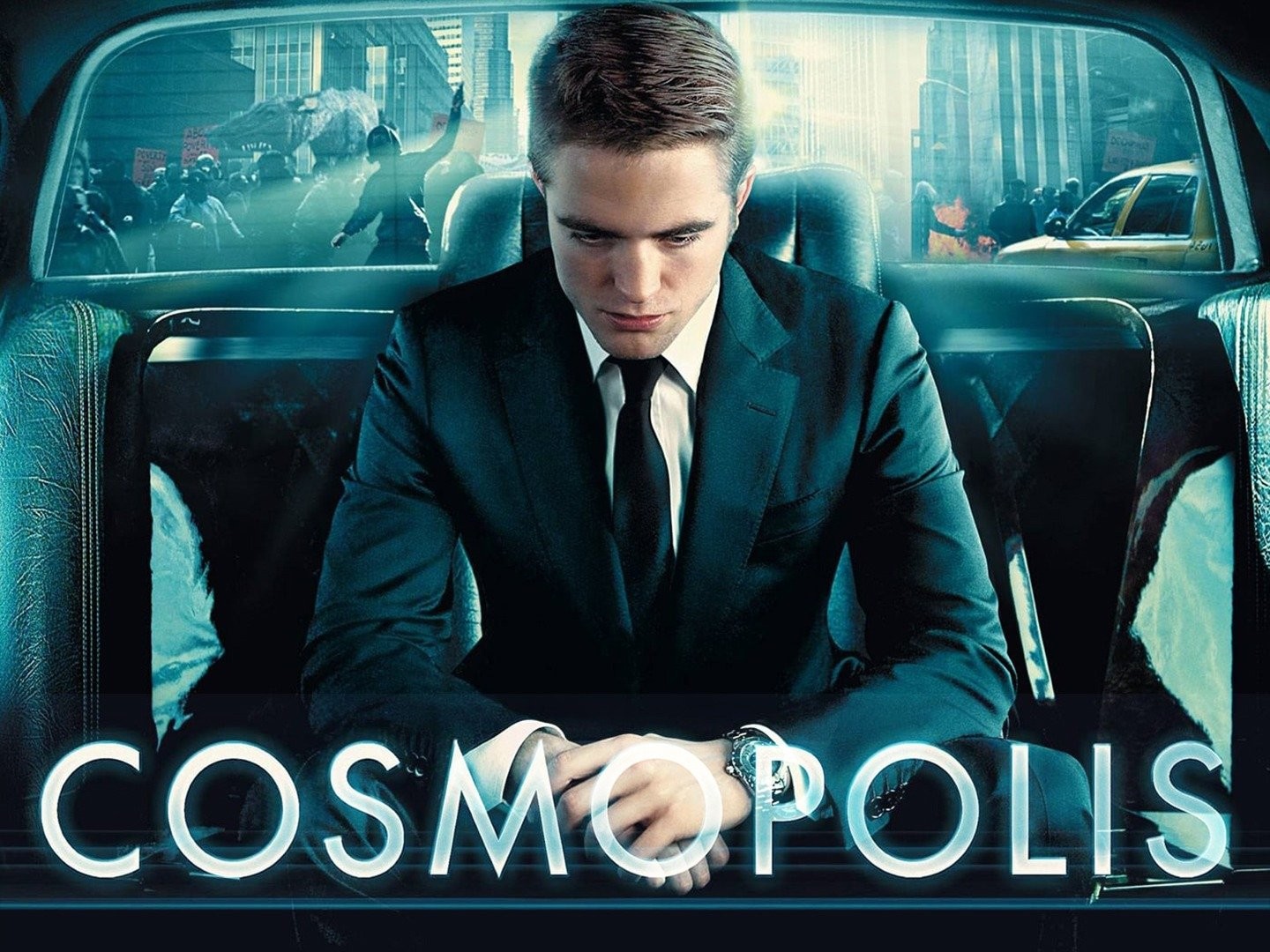
The film delves deep into themes of dehumanization and isolation amidst technological advancement and financial excess. Pattinson’s portrayal of Packer is compelling; he embodies the detachment and ennui of a man who has everything yet feels nothing, delivering a performance that is both subtle and intense. “Cosmopolis” challenges viewers to contemplate the moral and spiritual emptiness of a life devoted solely to the pursuit of wealth and pleasure.
“Cosmopolis” received mixed reviews from critics, with some praising its audacious vision and Pattinson’s performance, while others found it cold and inaccessible. However, there is a consensus that the film marked a significant turning point for Pattinson, demonstrating his eagerness to tackle challenging roles and work with acclaimed directors. His portrayal of Eric Packer is a departure from his previous roles, offering a glimpse into his range as an actor capable of conveying complex psychological states.

The film’s release amidst Pattinson’s transition phase allowed him to redefine his career trajectory, choosing projects that emphasize artistic integrity over commercial success. “Cosmopolis” not only proved Pattinson’s capability to anchor a film as its lead but also his commitment to evolving as an actor.
Working with Cronenberg, known for his provocative and intellectually stimulating films, provided Pattinson with an invaluable experience that influenced his subsequent choice of roles.
2. “Good Time”: A Symphony of Desperation and Redemption
“Good Time” was born out of the Safdie brothers’ fascination with the concept of time and its value. They sought to create a narrative that was not just a story about a bank robbery gone wrong but a deeper exploration of the human condition under pressure. The film’s pacing is deliberate, with each tick of the clock heightening the sense of urgency and desperation that Connie feels as he navigates through the night.
Robert Pattinson, seeking more challenging roles to diversify his filmography, was drawn to the project by the script’s raw intensity and the opportunity to work with directors known for their gritty, realistic portrayal of life on the fringes of society. Pattinson’s immersion into the character of Connie Nikas was profound.
He spent months preparing for the role, including living in a basement apartment in Harlem and exploring the city incognito to embody the life of someone constantly on the run and living at the edge of society.
The Performance That Redefined Pattinson
Pattinson’s portrayal of Connie Nikas in “Good Time” is a career-defining performance that showcased his range and depth as an actor. Connie is a character-driven by a misguided sense of loyalty and love for his brother, making choices that spiral into chaos.
Pattinson brings a raw, kinetic energy to the role, blending desperation with a cunning survival instinct. His performance is a tightrope walk between empathy and repulsion, forcing the audience to root for him despite his moral ambiguities.
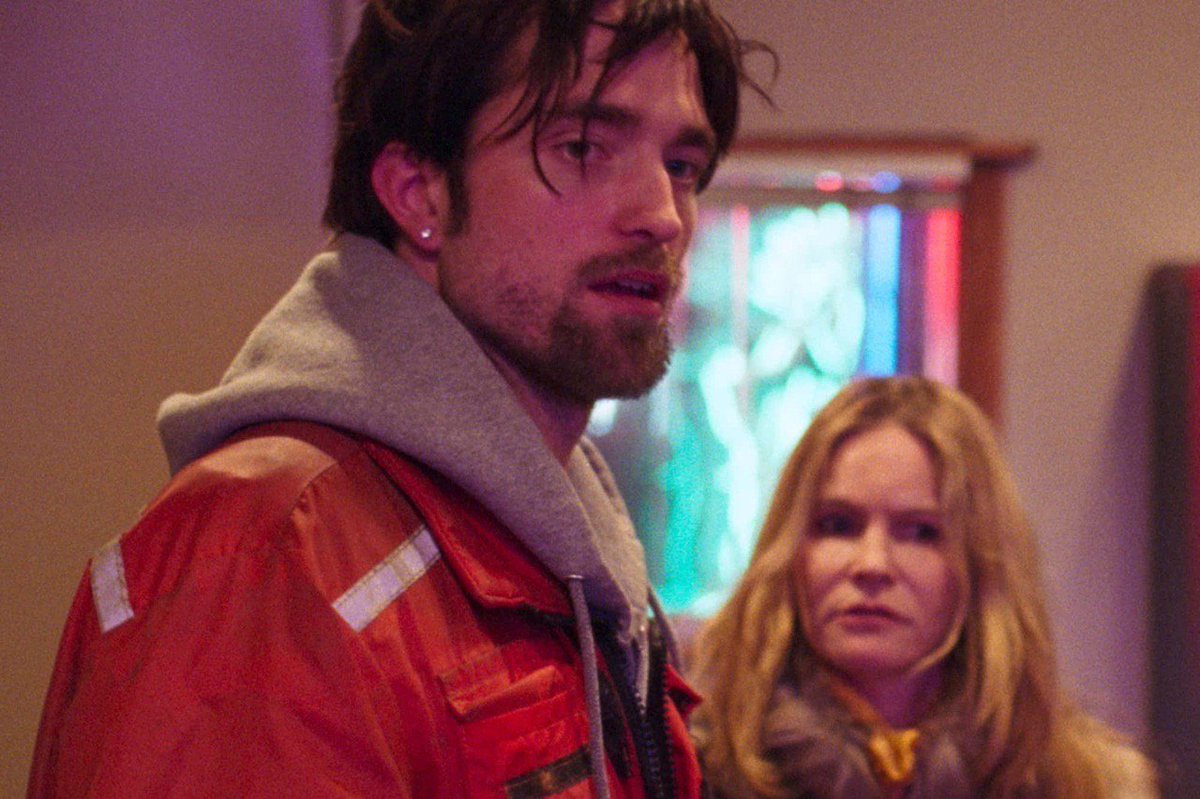
The physicality of the role is another aspect where Pattinson shines. The film’s relentless pace mirrors Connie’s own frantic energy, with Pattinson navigating the streets of New York, evading capture in a series of increasingly desperate situations. This physicality, combined with the emotional depth of the character, showcases Pattinson’s commitment to diving deep into the psyche of his characters, making “Good Time” a standout in his filmography.
The Safdie Brothers’ Vision
Josh and Benny Safdie have a distinctive style that blends realism with a unique cinematic flair, and “Good Time” is no exception. Their vision for the film was clear from the beginning: to create a high-stakes drama that was both a thrilling ride and a poignant exploration of familial bonds and societal margins. The Safdie brothers’ direction is precise and unflinching, capturing the neon-lit urban landscape of New York City with a gritty authenticity that serves as the perfect backdrop for Connie’s odyssey.
The film’s score, composed by Oneohtrix Point Never (Daniel Lopatin), is another character in itself, driving the narrative forward with its pulsating rhythms and haunting melodies. The score complements the film’s visual aesthetic, creating an immersive experience that’s both disorienting and captivating, much like Connie’s journey through the night.
Conclusion: “Good Time’s” Place in Cinema and Pattinson’s Career
“Good Time” is more than just a crime drama; it’s a poignant exploration of the lengths one will go to for family and the spiral of decisions that can lead to one’s downfall. The film has been lauded for its direction, Pattinson’s performance, and its unique score, earning it a place in contemporary cinema as a cult classic that defies genre conventions.

For Robert Pattinson, “Good Time” represented a pivotal moment in his career, marking his transition from a teenage heartthrob to a respected actor capable of tackling complex, challenging roles. His performance in the film has been a critical and commercial success, earning him praise from critics and audiences alike and cementing his status as one of the most versatile actors of his generation.
3. “The Lighthouse”: A Descent into Maritime Madness
“The Lighthouse,” directed by Robert Eggers, is a film that defies easy categorization, blending elements of psychological horror, drama, and dark comedy into a unique cinematic experience.
Set in the late 19th century, it tells the story of two lighthouse keepers, Thomas Wake (Willem Dafoe) and Ephraim Winslow (Robert Pattinson), who are stationed on a remote and mysterious New England island. As a storm strands them on the island, their sanity begins to unravel, leading to a chilling and surreal exploration of isolation, power, and identity.
Robert Eggers, known for his meticulous attention to historical detail and atmospheric storytelling, co-wrote “The Lighthouse” with his brother Max Eggers. Inspired by a real-life incident and the works of Herman Melville and Edgar Allan Poe, the film seeks to create a mythic tale that explores the darker aspects of human nature.
Shot in stark black and white with a nearly square aspect ratio, “The Lighthouse” is as much a visual masterpiece as it is a narrative one, with its claustrophobic framing and haunting imagery contributing to the film’s oppressive atmosphere.
In “The Lighthouse,” Robert Pattinson delivers a performance that is both raw and mesmerizing. His character, Ephraim Winslow, arrives at the island eager to earn his keep and escape his past, only to find himself locked in a power struggle with Dafoe’s character, the seasoned and tyrannical lighthouse keeper Thomas Wake.
Pattinson’s portrayal of Winslow is a masterclass in psychological deterioration, capturing the character’s descent from stoicism into madness with an intensity that is both terrifying and deeply sympathetic.
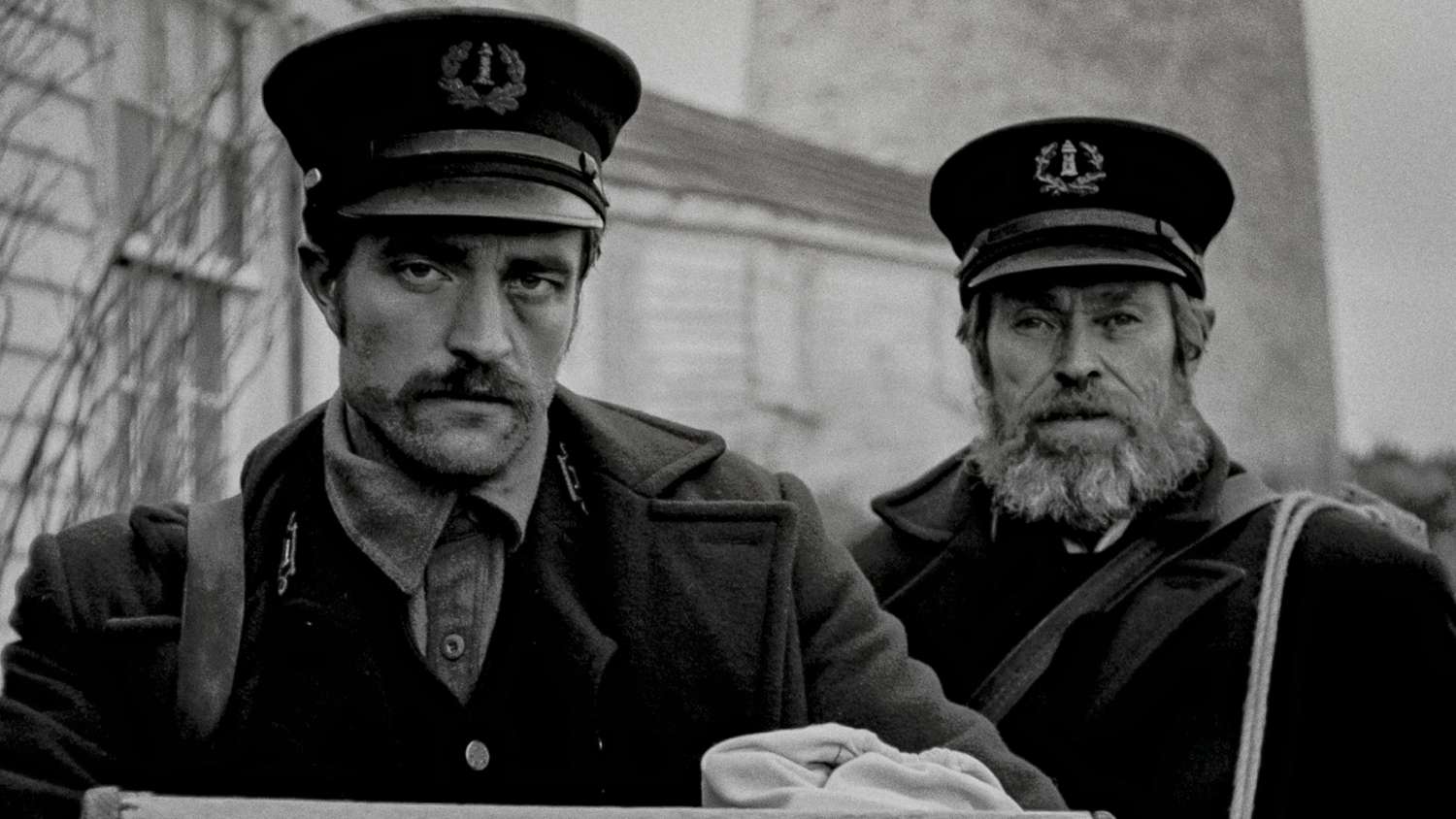
Pattinson’s commitment to the role is evident in every scene, from the physical demands of the character’s daily chores to the emotional volatility of his increasingly fractured psyche. His dynamic with Willem Dafoe is electrifying, with both actors delivering performances that push each other to the limits of their craft.
Pattinson’s ability to convey a complex range of emotions, from desperation to rage to haunting vulnerability, showcases his versatility and depth as an actor.
“The Lighthouse” is rich in symbolism, drawing from maritime folklore, psychoanalytic theory, and classical mythology to create a layered narrative that invites multiple interpretations.
The lighthouse itself, an object of obsession for both characters, serves as a potent symbol of knowledge, power, and isolation, while the relentless sea and the elements become characters in their own right, reflecting the characters’ inner turmoil.
The film’s impact on audiences and critics was significant, with its unique visual style, atmospheric tension, and powerhouse performances earning it widespread acclaim. “The Lighthouse” further cemented Robert Pattinson’s reputation as an actor willing to take on challenging and unconventional roles, demonstrating his ability to disappear into a character and deliver a riveting performance.
For Pattinson, “The Lighthouse” represents another milestone in his career, a testament to his skill and dedication to his craft. The film not only showcases his range as an actor but also his willingness to explore the darker, more complex aspects of the human experience, making it a critical and artistic triumph.

Conclusion
“The Lighthouse” stands as a testament to the power of cinema to explore the depths of the human psyche, a hauntingly beautiful film that lingers long after the credits roll. Robert Pattinson’s performance is a key component of its success, marking another step in his evolution as one of his generation’s most compelling and versatile actors.
4. “Tenet”: Unraveling Time’s Tapestry
Directed by Christopher Nolan, “Tenet” is a high-concept espionage thriller that intertwines time manipulation with a complex narrative structure. The film introduces audiences to a world where the flow of time can be inverted, allowing individuals to move backward through time as the rest of the world proceeds normally.
Robert Pattinson stars as Neil, a key operative in the secretive organization known as Tenet, alongside John David Washington’s character, known as The Protagonist. Together, they embark on a mission that unfolds across several countries and time frames, aiming to prevent a catastrophic event that threatens the very existence of the world.
A Complex Narrative Fabric
“Tenet” is emblematic of Nolan’s penchant for intricate storytelling and innovative conceptual frameworks. The film’s narrative is a labyrinthine exploration of causality, free will, and the entropy of the universe, demanding active engagement from the audience to unravel its many layers. Nolan crafts a cinematic experience that combines theoretical physics with high-stakes action, resulting in a visually stunning and intellectually stimulating film.
Robert Pattinson’s Role in “Tenet”
In “Tenet,” Pattinson’s character, Neil, serves as both a guide and a foil to The Protagonist. Neil’s knowledge of the workings of inversion and his calm demeanor provide a counterbalance to The Protagonist’s determination and intensity. Pattinson brings charm and wit to the role, infusing Neil with a sense of mystery and depth that complements the film’s complex narrative.
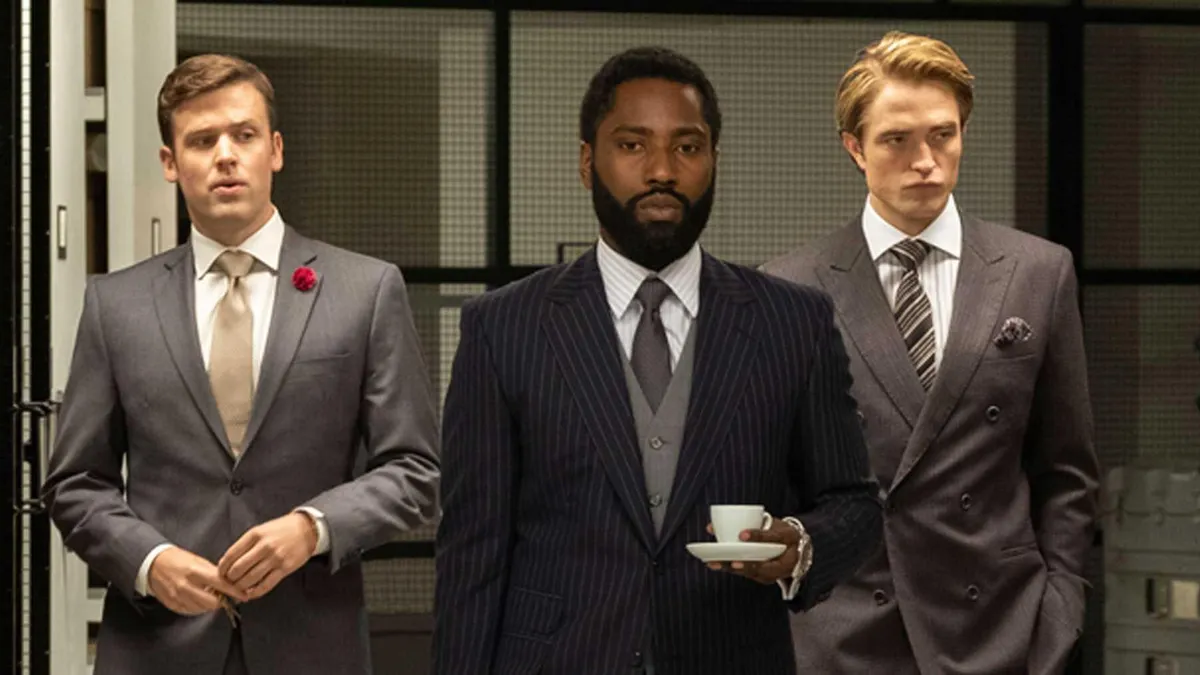
Pattinson’s performance is marked by subtlety and nuance, hinting at Neil’s broader significance to the story’s unfolding puzzle. His chemistry with John David Washington anchors the film’s dynamic action sequences and philosophical debates, highlighting Pattinson’s ability to hold his own in a blockbuster of this magnitude.
The Challenge of “Tenet”
“Tenet” posed unique challenges for its cast and crew, from the logistical complexities of filming action sequences with time inversion to the conceptual challenge of embodying Nolan’s vision. Pattinson’s involvement in the film required a deep understanding of its intricate plot and the physical demands of its action-packed sequences. His commitment to the role and his ability to navigate the film’s conceptual and physical demands showcase his growth as an actor capable of contributing to cinema’s most innovative projects.
Legacy and Impact
“Tenet” stands as a testament to Christopher Nolan’s ambition and his ability to push the boundaries of cinematic storytelling. For Robert Pattinson, the film represents another milestone in his career, demonstrating his versatility and his capacity to engage with complex material.
“Tenet” further solidified Pattinson’s status as a leading actor capable of transitioning between independent films and large-scale blockbusters, underscoring his talent and dedication to his craft.

Conclusion
Through “Tenet,” Robert Pattinson continues to diversify his filmography, taking on roles that challenge him and contribute to his evolution as an actor. His performance in “Tenet” exemplifies his commitment to complex characters and narratives, reinforcing his position as one of his generation’s most dynamic and interesting actors.
5. “The Batman”: A Dark Knight Reborn
Directed by Matt Reeves, “The Batman” offers a gritty, noir-inspired take on the caped crusader, focusing on Bruce Wayne’s second year as Gotham’s vigilante. This iteration delves deep into Batman’s role as a detective, unraveling a series of crimes that expose the corruption and decay festering at Gotham’s heart.
Robert Pattinson’s portrayal of Batman/Bruce Wayne brings a new level of intensity, vulnerability, and complexity to the character, exploring his psyche with a rawness that sets this version apart from its predecessors.
Crafting a New Vision for Gotham
Matt Reeves’ vision for “The Batman” was clear from the outset: to create a story that felt grounded and real, emphasizing the detective aspect of the character that had often been sidelined in previous adaptations.
The film draws inspiration from classic noir films, utilizing its moody aesthetics, complex characters, and intricate plot to weave a tale of mystery and suspense. The Gotham City in “The Batman” is a character in its own right, a sprawling urban landscape that mirrors the darkness and complexity of its inhabitants.
Robert Pattinson’s Transformation
Taking on the role of Batman is a formidable task, given the character’s iconic status and the various interpretations that have come before. Pattinson approached the character with a commitment to exploring the depths of Bruce Wayne’s trauma and the duality of his existence as both man and myth.
His performance is nuanced, portraying Wayne as a brooding, driven, and deeply conflicted figure whose crusade against crime is as much a personal vendetta as it is a mission for justice.
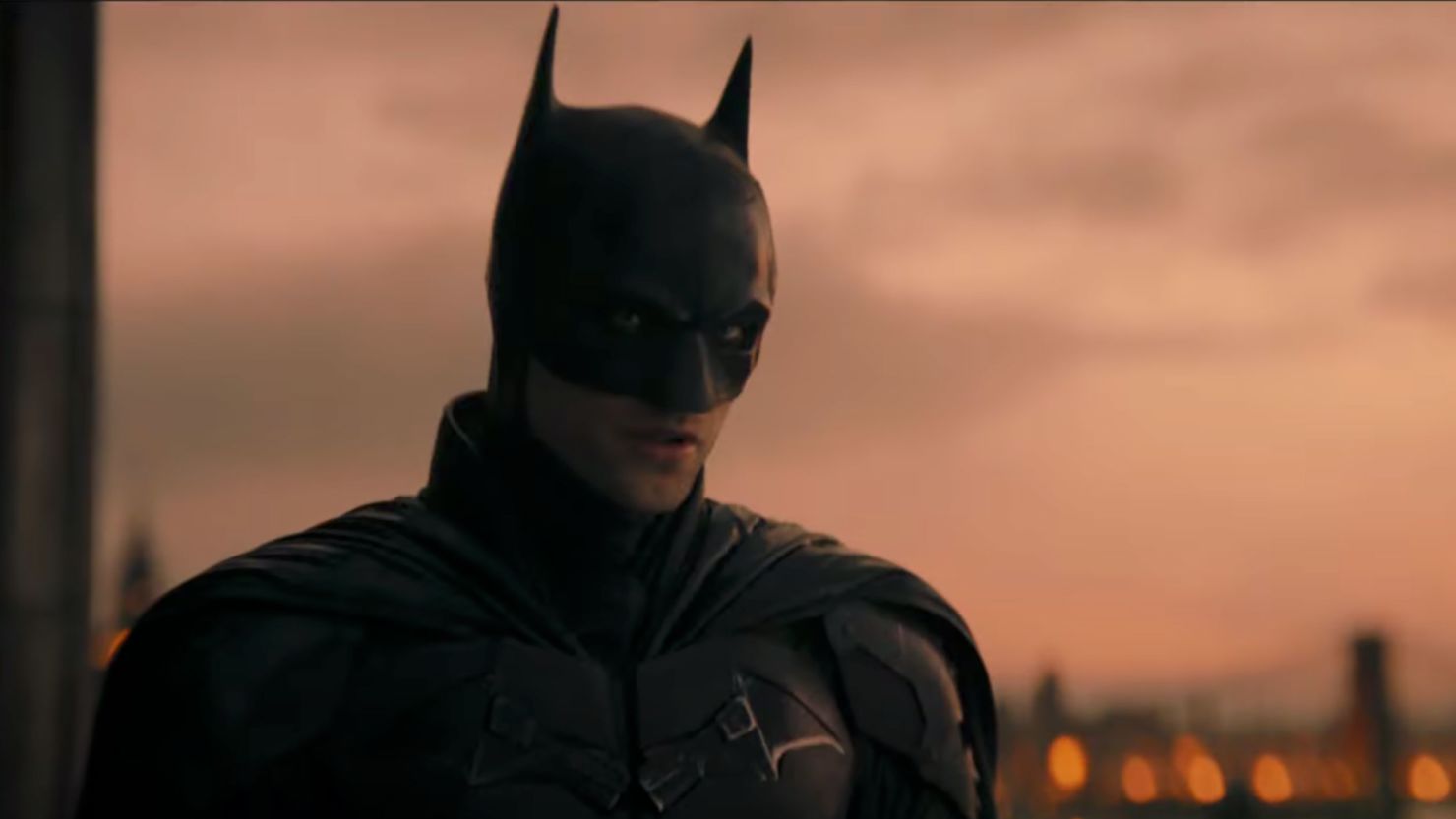
Pattinson’s physical transformation for the role was significant, adopting an intense training regimen to embody the physicality of Batman. However, it is in the quieter, more introspective moments that Pattinson truly shines, offering a glimpse into the solitude and burden of being Gotham’s dark knight.
His chemistry with the supporting cast, including Zoë Kravitz as Catwoman, Jeffrey Wright as James Gordon, and Paul Dano as the Riddler, adds layers to the narrative, enriching the film’s exploration of justice, vengeance, and redemption.
“The Batman” and Its Cultural Impact
“The Batman” was met with critical acclaim and commercial success, praised for its direction, visual style, and Pattinson’s performance. The film’s darker tone, complex characters, and moral ambiguity offered a fresh perspective on the superhero genre, resonating with audiences seeking a more mature and thoughtful depiction of their comic book heroes.
For Robert Pattinson, “The Batman” represents a significant milestone, marking his foray into blockbuster cinema as a leading man. The role allowed him to showcase his range as an actor, demonstrating his ability to inhabit deeply iconic roles while bringing his unique interpretation to the character.
“The Batman” solidified Pattinson’s reputation as a versatile actor capable of navigating the demands of both independent cinema and major franchise filmmaking.

Conclusion
In “The Batman,” Robert Pattinson delivers a compelling and memorable portrayal of one of cinema’s most enduring characters, redefining the dark knight for a new generation. His performance is a testament to his talent and dedication to his craft, further establishing him as one of the most interesting and dynamic actors of his time.
6. “High Life”: A Voyage into the Unknown
“High Life” tells the story of Monte (Robert Pattinson) and his baby daughter, the last survivors of a doomed mission to deep space. The crew, composed of death row inmates, is sent on a journey toward a black hole while participating in a series of experiments on human reproduction in space. The film is a haunting, meditative exploration of what it means to be human in the vast emptiness of the cosmos, challenging the boundaries of genre and narrative.
Claire Denis’ Visionary Direction
French filmmaker Claire Denis is known for her ability to craft films that are visually striking and thematically rich, often exploring complex human emotions and relationships. “High Life” is no exception, marking her English-language debut and her first foray into science fiction. Denis’ direction brings a unique perspective to the genre, focusing on the intimate and existential rather than the grandiose and speculative.
The film’s slow pace, atmospheric tension, and visual storytelling contribute to its profound impact, creating a space odyssey that is as much about inner space as it is about outer space.
Robert Pattinson’s Stellar Performance
In “High Life,” Pattinson delivers one of his most nuanced performances. His portrayal of Monte, a man wrestling with his past and facing an uncertain future, showcases Pattinson’s ability to convey deep emotional turmoil without words. The relationship between Monte and his daughter provides the emotional core of the film, exploring themes of love, sacrifice, and survival in the most extreme conditions.
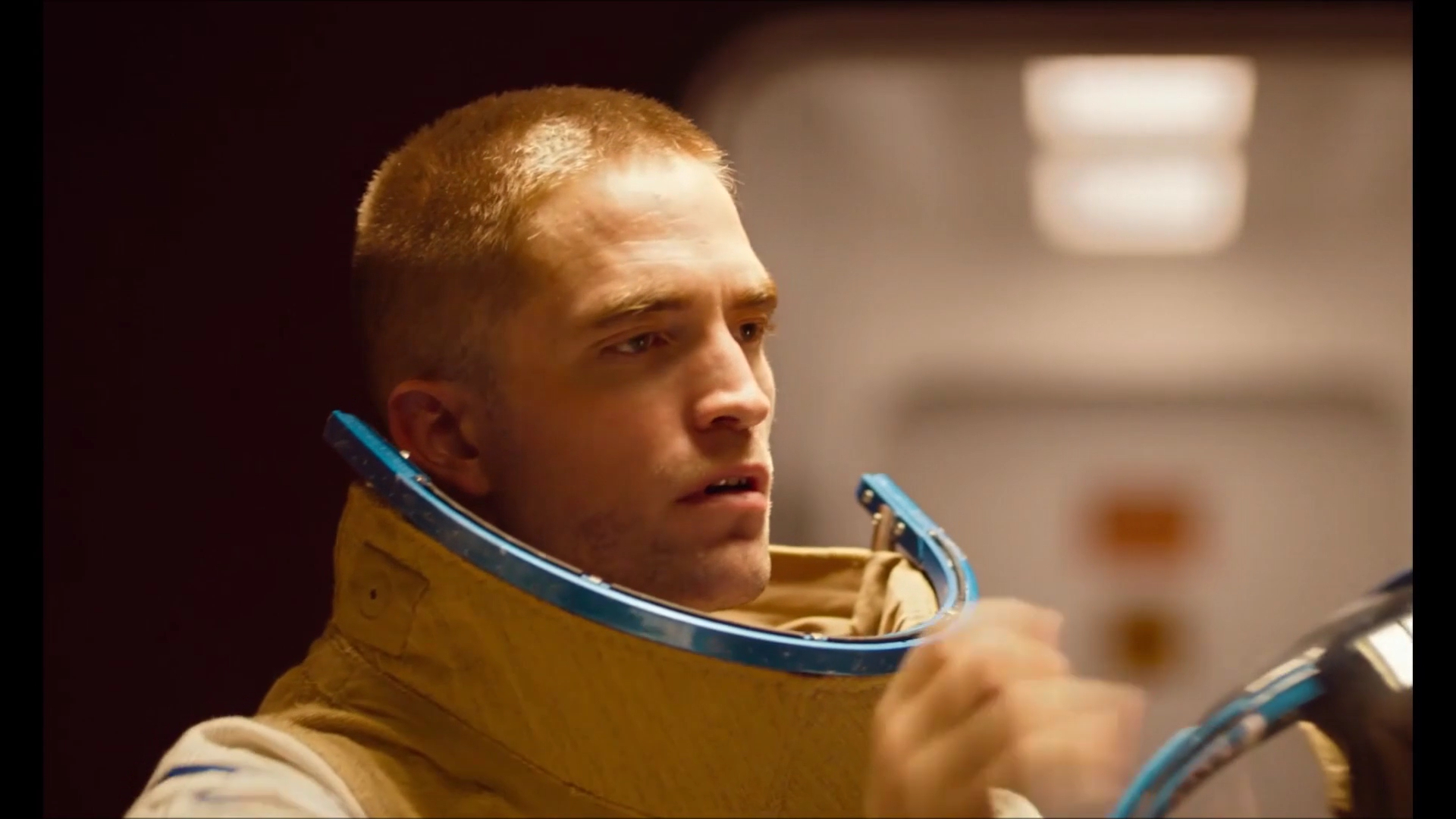
Pattinson’s commitment to the role is evident in his immersive portrayal, which required him to navigate the physical and psychological challenges of portraying a character in complete isolation. His collaboration with Claire Denis highlights his willingness to push his boundaries as an actor, choosing roles that challenge conventional storytelling and character development.
The Impact of “High Life”
“High Life” received critical acclaim for its originality, direction, and performances, particularly Pattinson’s. The film stands as a testament to Denis’ unique vision and Pattinson’s versatility, proving that both are unafraid to explore the depths of the human experience in their work. “High Life” challenges audiences to confront their perceptions of morality, redemption, and the meaning of life, securing its place as a cult classic in the science fiction genre.
For Robert Pattinson, “High Life” represents another significant step in his career, further distancing himself from his early heartthrob image and establishing himself as a serious, skilled actor capable of tackling a wide range of roles. The film showcases his ability to lead a complex, unconventional narrative, reinforcing his status as a dynamic and compelling presence in contemporary cinema.

Conclusion
“High Life” is a bold, thought-provoking film that defies easy categorization, blending science fiction with a deeply human story. Robert Pattinson’s performance is a standout, offering a glimpse into the capabilities of one of his generation’s most versatile actors. The film’s exploration of isolation, human nature, and the infinite expanse of space and time leaves a lasting impression, marking “High Life” as a significant work in both Pattinson’s career and the science fiction genre.
7. “Water for Elephants”: A Tale of Love and Compassion
In “Water for Elephants,” Pattinson portrays Jacob Jankowski, a young man who, after a tragic family loss, finds himself adrift and eventually hops on a train that happens to be home to the Benzini Brothers Most Spectacular Show on Earth.
He quickly becomes embroiled in the life of the circus, falling in love with Marlena (played by Reese Witherspoon), the star performer, who is married to August (played by Christoph Waltz), the charismatic but cruel animal trainer and circus boss.
The Era and Its Echoes
“Water for Elephants” transports viewers to the 1930s, a time marked by economic hardship and societal upheaval, mirrored in the lives of the characters and the precarious existence of the traveling circus.
The film beautifully captures the era’s essence through its meticulous production design, costume, and cinematography, creating a vivid backdrop for the unfolding drama. The circus setting serves as a microcosm for the larger world outside, filled with beauty and brutality, hope and despair.
Robert Pattinson’s Evocative Performance
Pattinson’s portrayal of Jacob Jankowski is a critical anchor for the film. He brings a quiet strength and vulnerability to the role, effectively conveying Jacob’s internal struggle and his deep compassion for both animals and people. Pattinson’s chemistry with Reese Witherspoon adds depth to their characters’ complicated relationship, set against the backdrop of the circus’s enchanting but harsh reality.
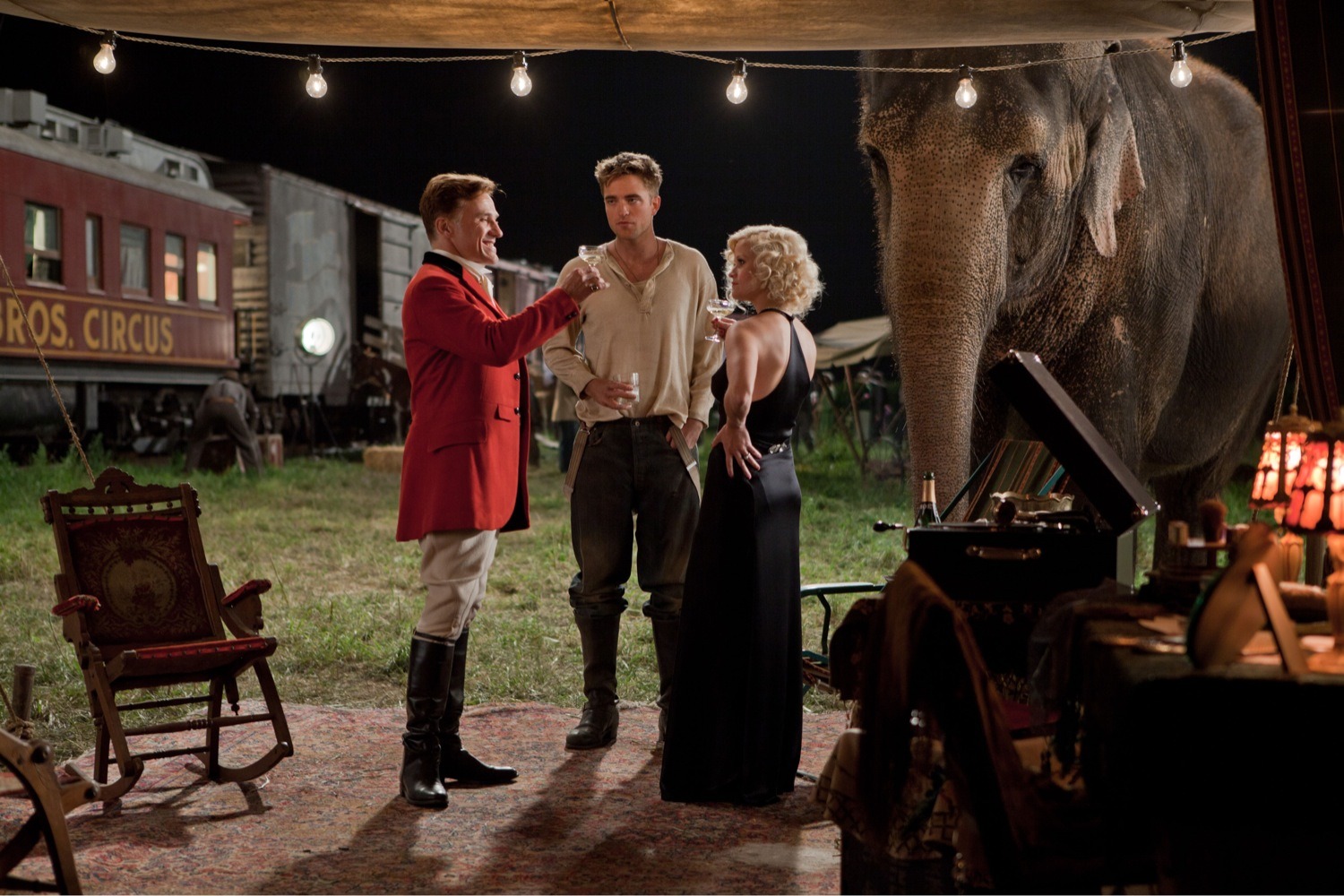
Jacob’s journey from a lost young man to someone who finds purpose and passion is compelling, highlighting Pattinson’s range as an actor and his ability to navigate complex emotional landscapes. His interactions with the circus animals, particularly Rosie the elephant, further demonstrate his character’s kindness and empathy, qualities that endear him to the audience and his fellow characters alike.
The Impact of “Water for Elephants”
“Water for Elephants” received mixed to positive reviews from critics, with particular praise for its visual style, the performances of its lead actors, and its romantic and nostalgic appeal. The film managed to capture the imagination of audiences worldwide, drawn to its classic love story and the allure of the circus setting.
For Robert Pattinson, “Water for Elephants” represented an important departure from his roles in fantasy and science fiction, showcasing his versatility as an actor and his ability to hold his own alongside seasoned performers like Witherspoon and Waltz. The film further established Pattinson as a leading man in Hollywood, capable of drawing audiences into the emotional world of his characters.

Conclusion
“Water for Elephants” stands as a testament to the enduring appeal of romantic dramas, offering audiences a glimpse into a bygone era through the lens of a captivating love story. Robert Pattinson’s performance is a highlight, proving his ability to adapt to a wide range of genres and characters. The film remains a memorable entry in Pattinson’s diverse filmography, showcasing his growth as an actor and his commitment to exploring the many facets of the human experience.
8. “Remember Me”: A Story of Love and Legacy
“Remember Me” tells the story of Tyler Hawkins (Robert Pattinson), a rebellious young man struggling with his relationship with his father (played by Pierce Brosnan) following his brother’s suicide. Tyler’s life takes a turn when he meets Ally Craig (played by Emilie de Ravin), a young woman who has experienced her tragedy.
As Tyler and Ally’s relationship deepens, they find solace in each other, confronting their past traumas and the impermanence of life.
The Emotional Landscape of “Remember Me”
At its core, “Remember Me” is a film about the human condition — the pain of loss, the challenge of forgiveness, and the redemptive power of love. The narrative is anchored by Pattinson’s performance, which brings depth and nuance to the character of Tyler. Pattinson portrays Tyler as brooding and complex yet also vulnerable and endearing, effectively capturing the character’s internal struggle and desire for connection.
The chemistry between Pattinson and Emilie de Ravin is palpable, grounding the film’s romantic elements in genuine emotion and shared experience. Their relationship, marked by both tenderness and tension, serves as the heart of the story, driving its exploration of grief and healing.
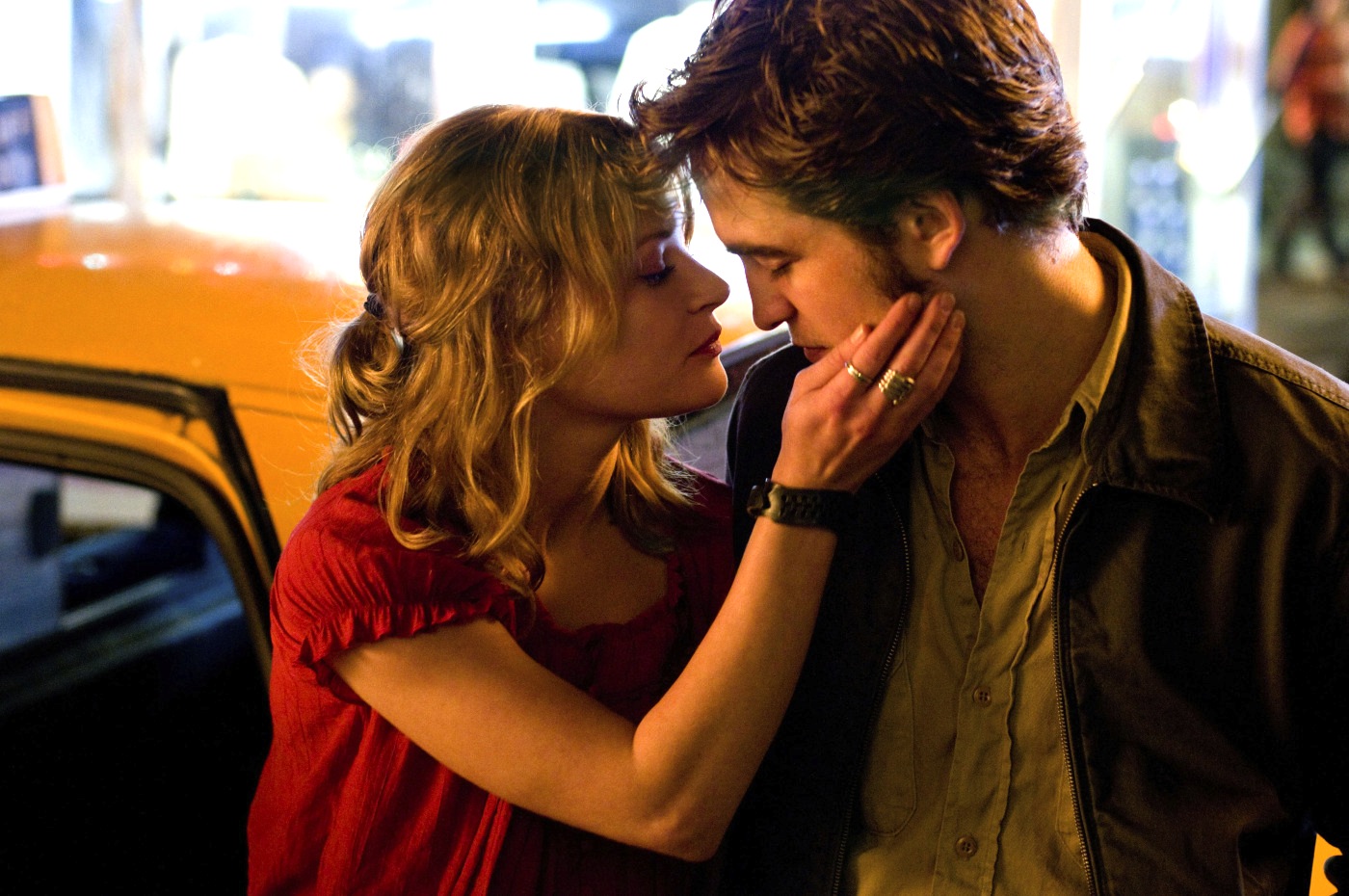
Robert Pattinson’s Role in “Remember Me”
“Remember Me” showcases Pattinson’s ability to navigate emotionally charged narratives, offering a departure from the more fantastical roles that initially brought him fame. His portrayal of Tyler Hawkins stands out for its sincerity and intensity, highlighting Pattinson’s range as an actor and his capacity to engage with complex characters.
Pattinson’s involvement in the film also demonstrated his interest in exploring diverse storytelling avenues, choosing roles that challenge him personally and professionally. “Remember Me” provided an opportunity for Pattinson to delve into a character grappling with profound personal loss, a theme that resonates with audiences on a deeply human level.
The Impact and Legacy of “Remember Me”
“Remember Me” received mixed reviews from critics but was praised for its performances, particularly Pattinson’s. The film’s emotional weight and its exploration of love and loss struck a chord with audiences, offering a poignant look at how personal tragedy can shape and define us.
For Robert Pattinson, the film represents another step in his evolution as an actor, showcasing his commitment to tackling roles that offer depth and complexity. “Remember Me” contributed to Pattinson’s growing reputation as a versatile and capable leading man, further distancing him from his early typecasting as a teen idol.

Conclusion
“Remember Me” stands as a touching and introspective film that explores the fragility of life and the enduring power of love. Robert Pattinson’s performance is a key element of its emotional resonance, demonstrating his ability to convey deep feelings of loss and redemption. The film adds to Pattinson’s diverse body of work, highlighting his talent for bringing multifaceted characters to life on the big screen.
9. “The Rover”: A Desolate Journey into the Heart of Humanity
“The Rover” tells the story of Eric (played by Guy Pearce), a hardened, solitary man whose last possession, his car, is stolen by a gang of criminals. Robert Pattinson plays Rey, a naive and injured member of the gang who is left behind and becomes the key to Eric’s pursuit. The unlikely partnership between Eric and Rey leads them on a relentless chase through the desolate landscape, exploring themes of survival, revenge, and the quest for meaning in a broken world.
The Bleak World of “The Rover”
David Michôd’s direction creates a haunting vision of the future, where the collapse of society has left individuals to fend for themselves in a landscape stripped of morality and humanity. The Australian outback serves as the perfect backdrop for this narrative, its vastness and desolation reflecting the emptiness and brutality of the world Michôd envisions. The cinematography captures the harsh beauty of the landscape, underscoring the film’s stark portrayal of survival and loss.
Robert Pattinson’s Transformation
In “The Rover,” Pattinson delivers a compelling performance as Rey, showcasing his ability to inhabit deeply flawed and vulnerable characters. Pattinson’s portrayal of Rey is a departure from his previous roles, highlighting his range and commitment to character-driven storytelling. Rey’s innocence and loyalty provide a stark contrast to Eric’s cynicism and brutality, making their dynamic a central focus of the film.
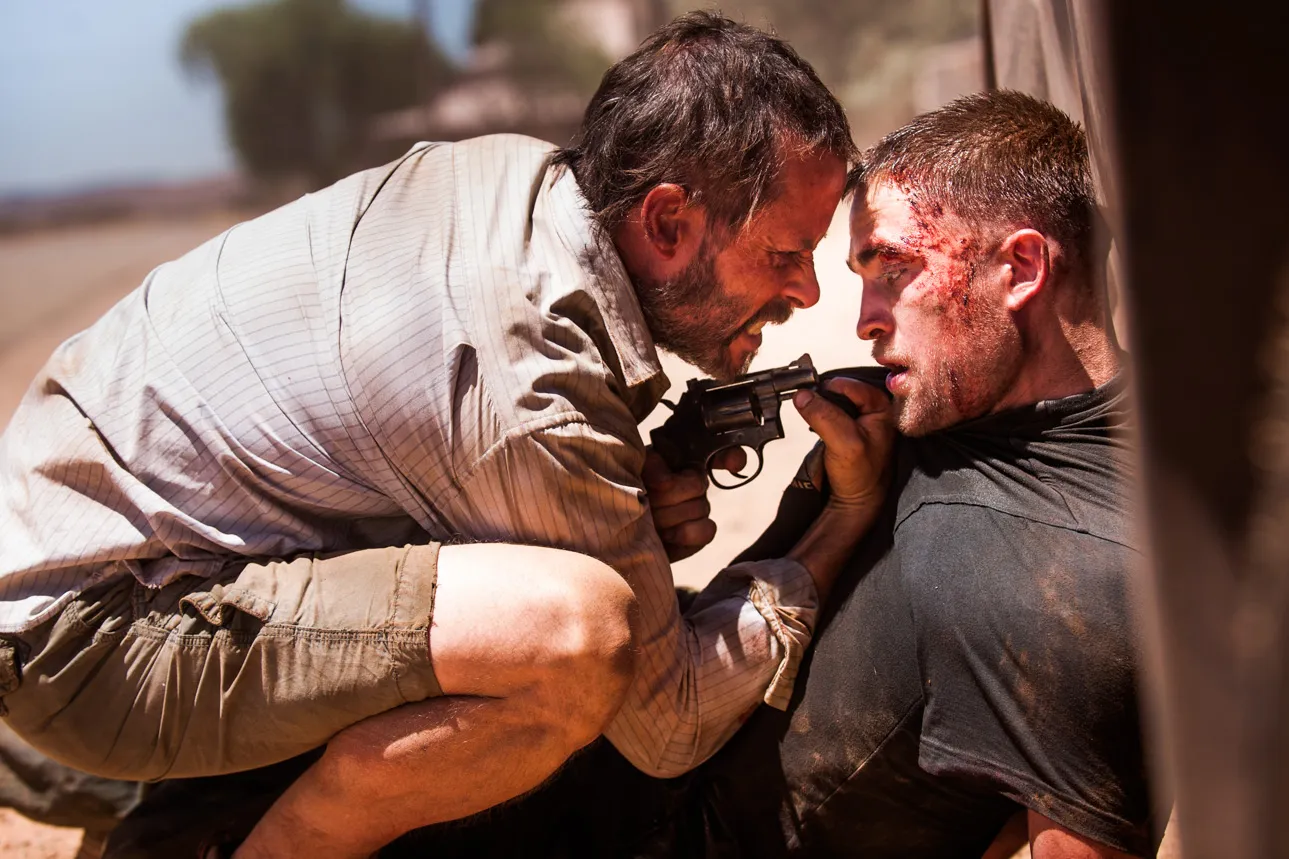
Pattinson’s transformation for the role required a significant physical and emotional investment, embodying a character whose simplicity and vulnerability are his strengths in a world defined by violence. Pattinson’s performance received critical acclaim, further establishing him as an actor capable of tackling challenging and diverse roles.
Themes and Impact of “The Rover”
“The Rover” explores the essence of what it means to be human in the face of societal collapse, questioning the value of survival in a world devoid of meaning. The film’s bleak outlook is counterbalanced by the characters’ complex relationship, which, despite its unlikely origins, offers glimpses of hope and redemption.
The film’s impact lies in its ability to combine a minimalist narrative with profound thematic depth, challenging audiences to reflect on the nature of humanity, loyalty, and the pursuit of justice. “The Rover” is a testament to the power of cinema to explore dark, existential themes through the lens of personal stories and relationships.

Conclusion
“The Rover” is a gripping and thought-provoking film that stands as a significant work in both David Michôd’s directorial career and Robert Pattinson’s acting portfolio. Pattinson’s performance as Rey offers a poignant exploration of vulnerability and humanity, showcasing his growth as an actor and his willingness to explore the darker aspects of the human condition. The film remains a compelling examination of survival and redemption, leaving a lasting impact on its audience.
10. “Twilight”: A Cultural Phenomenon
“Twilight” emerged as a cultural phenomenon, capturing the imaginations of audiences worldwide and sparking a fervent fanbase. The film’s success lay not only in its romantic storyline but also in its creation of a unique universe where vampires and werewolves exist secretly alongside humans.
Pattinson’s portrayal of Edward Cullen, the brooding vampire torn between his love for Bella and the dangers their relationship brings, became iconic, defining a generation’s vision of romantic heroism.
Robert Pattinson as Edward Cullen
Taking on the role of Edward Cullen was a significant challenge for Pattinson, requiring him to embody a character that was already deeply loved and idealized by fans of the book series. Pattinson’s performance captured Edward’s complexity—his eternal youth, his struggle with his nature, and his deep, unwavering love for Bella. This role showcased Pattinson’s ability to convey deep emotion and vulnerability, contributing to the film’s dramatic tension and romantic allure.
The chemistry between Pattinson and Stewart was a key component of the film’s success, creating a compelling and believable love story that resonated with audiences. Pattinson’s portrayal of Edward as mysterious, protective, and ultimately benevolent helped redefine the archetype of the vampire in popular culture, moving away from traditional horror interpretations to something more romantic and sympathetic.
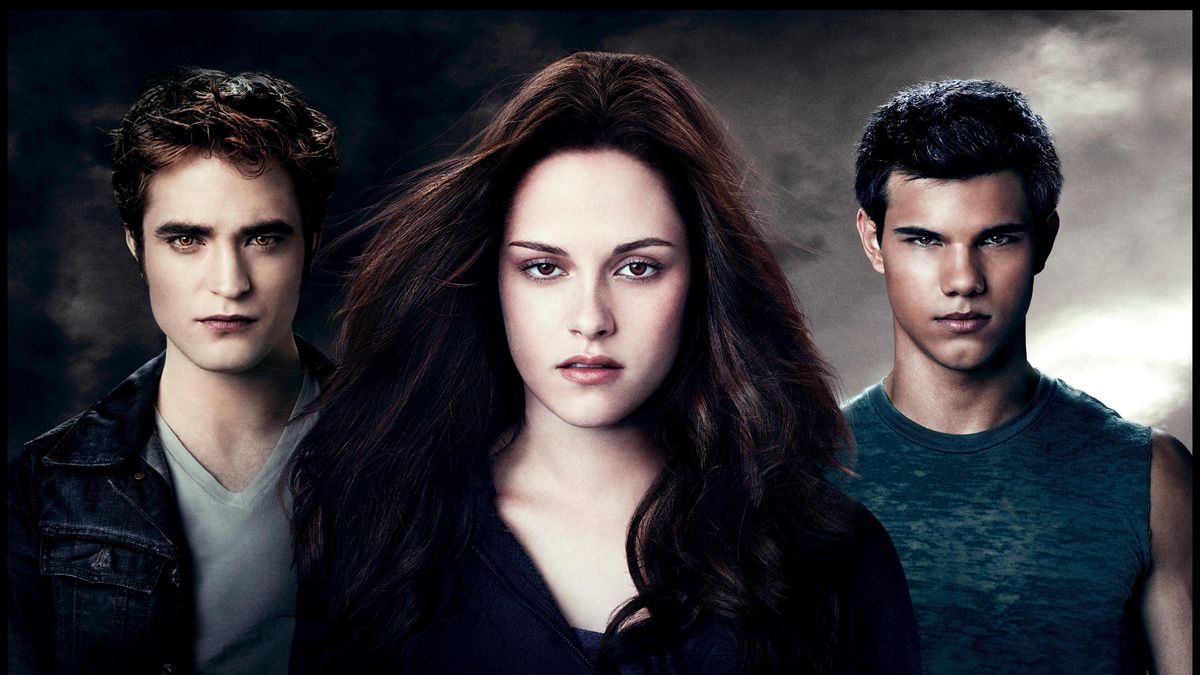
The Impact of “Twilight”
The success of “Twilight” had a profound impact on popular culture, inspiring a resurgence of interest in vampire-themed media and contributing to the development of the young adult genre in literature and film. For Robert Pattinson, the role was both a blessing and a challenge, as it brought him immense fame and opportunity but also typecast him as a teen idol.
In the years following “Twilight,” Pattinson has worked diligently to diversify his roles, choosing projects that challenge him and allow him to showcase his range as an actor. His post-“Twilight” career, including films like “Good Time,” “The Lighthouse,” and “The Batman,” reflects his commitment to artistic growth and exploration.
Conclusion
“Twilight” stands as a landmark film in Robert Pattinson’s career, serving as the launch pad for his journey into more complex and challenging roles. While Edward Cullen remains one of his most recognizable characters, Pattinson’s subsequent work has demonstrated his versatility and dedication to his craft.
As he continues to evolve as an actor, his early work in “Twilight” remains a testament to his ability to connect with audiences and bring depth to even the most fantastical of characters.

With our detailed exploration of Robert Pattinson’s top films concluded, we’ve seen the breadth of his talent and the diverse range of characters he’s brought to life. From the depths of space in “High Life” to the brooding shores of “The Lighthouse,” Pattinson’s career is a testament to the power of transformation and the endless possibilities of cinema.
Conclusion
Robert Pattinson’s career, we’ve journeyed through the transformative roles and significant performances that have marked him as one of his generation’s most versatile and compelling actors. From the supernatural allure of “Twilight” to the gritty realism of “Good Time” and the haunting atmosphere of “The Lighthouse,” Pattinson has consistently demonstrated his ability to delve deep into the psyche of his characters, bringing them to life with intensity and nuance.
His career trajectory is a testament to his dedication to his craft and his willingness to push beyond the boundaries of typecasting, proving himself in a range of genres, from romantic dramas to high-concept thrillers and beyond. Pattinson’s collaborations with visionary directors have not only enriched his filmography but also contributed to the cinematic landscape, challenging audiences and critics alike to reconsider their perceptions of him as an actor.
Beyond his on-screen achievements, Pattinson’s impact extends to his influence on popular culture, his status as a fashion icon, and his involvement in philanthropy, showcasing the breadth of his talents and interests. As he continues to evolve and take on new challenges, Pattinson’s career promises further exploration of complex characters and stories, underscoring his place in contemporary cinema as a dynamic and transformative actor.
Reflecting on Robert Pattinson’s journey through the film industry, it’s clear that his commitment to artistic growth and exploration has not only defined his career but also enriched the films he’s been a part of.
As we look forward to his future projects and collaborations, Pattinson’s legacy as an actor who defies expectations and embraces the depth of human experience remains a compelling narrative in the world of film.
This detailed exploration of Robert Pattinson’s top films and his contributions to cinema highlights not just the milestones of his career but also the depth of his talent and the enduring impact he has made on audiences and the film industry alike.


